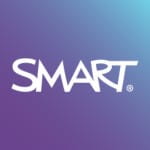We want to take a moment to share a story with you, one that revolves around the incredible students and teachers at Mary McLeod Bethune School in Philadelphia. We had the privilege of speaking to Jeri Johnson, a reading interventionist for 7th and 8th Grade Literacy, to explore a day in the life of her students.
Mary McLeod Bethune School is PK-8 school with demographics representative of many inner city schools across the country. High crime rates characterize their neighborhood and students bring significant levels of trauma with them to the classroom. Of the students enrolled at Bethune, only 16% are performing above proficient in reading. Additionally, the majority of the school qualifies for free and reduced lunch, and their student body is 99.5% minority enrollment.
To better support students, educators at Bethune work to foster a strong sense of community. With fewer than 548 students in grades PK-8, educators have the opportunity to build deep connections with their students. They offer before and after care programs to ensure students receive the meals they need, and are fortunate to have the support of the local PBS station that runs a college preparation program twice a week.
Now, let's talk about the invaluable tool that Jeri uses in her daily routine: Lumio.
“This platform has been a game-changer for me and my students. Not only does it support social-emotional learning, but it also provides a space for us to check in with one another through community meetings”
Jerri explains that Lumio offers various vocabulary practice activities such as Frayer models, Venn diagrams, T-charts, pictures, words, and non-examples, which helps to engage her students and enhance their language skills.
As part of the district's new curriculum, Jeri has incorporated reading four novels throughout the school year, one per marking period. These novels often can be challenging for her students due to their complexity and that they are often above students’ current reading levels. For example, at the time of this interview, students were exploring Lorraine Hansberry's A Raisin in the Sun, a novel typically taught in high school. This means there is a lot of vocabulary and reading comprehension for her students to grasp, not to mention understanding the deeper meaning within the text itself.
“With only 6 to 7 weeks to tackle this, Lumio has become an indispensable tool for breaking down the reading into manageable chunks. We start by activating prior knowledge with a ‘Shout It Out’ brainstorming activity, followed by providing smaller sections of the text for them to read while listening to a YouTube video.”
This approach offers the scaffolding they need to succeed. Jeri spends two days a week, 90 minutes each day, with her students engaging in modeling exercises, and then they have the opportunity to work individually or in small groups.
“The beautiful thing about Lumio is that there are several pathways to practice. It’s not just pictures and words, we’ll use Venn diagrams, t-charts, non-examples, and Lumio makes it so easy to use those different resources.”
Lumio seamlessly guides the class through this process and enables teachers to lead students with ease. Not only do Jeri’s students enjoy practicing with Lumio’s game-based activities, but they also appreciate the autonomy to express their thoughts in unique ways using different graphic organizers. Writing and drawing become their personal outlets, fostering creativity and individuality. Jeri says that as a teacher, Lumio empowers her to provide instant feedback directly within the platform, without drawing undue attention to any particular student, which greatly benefits many of the learners in her class.
It’s uplifting to know that in partnership with schools and districts, we can create an environment of accessibility, inclusivity, and diversity that uplifts every student, regardless of their circumstances. With tools like Lumio, we can begin to bridge the gap between students’ current abilities and their potential.
Learn more about Lumio and how it connects students of all abilities to learning here:


